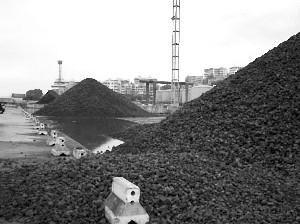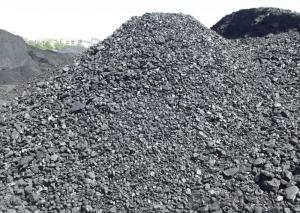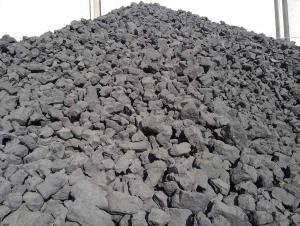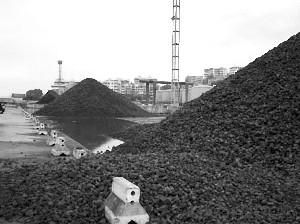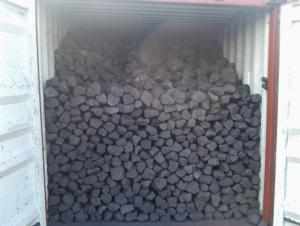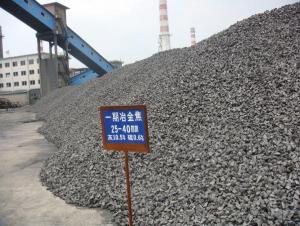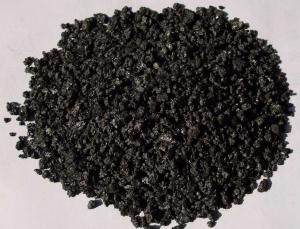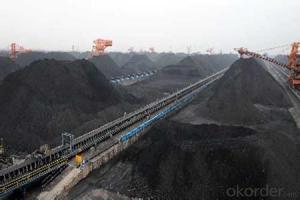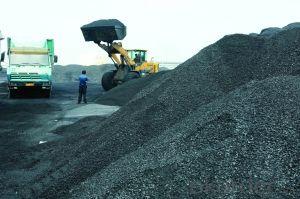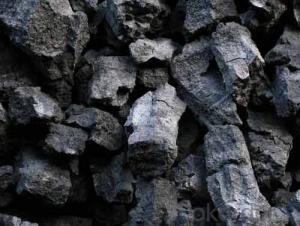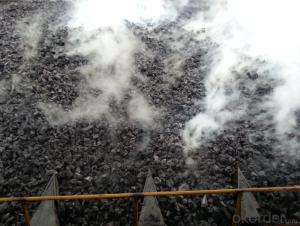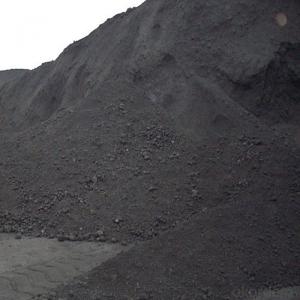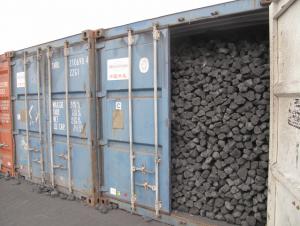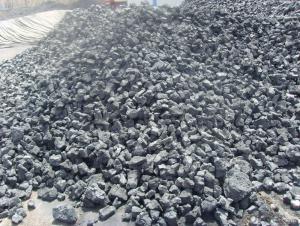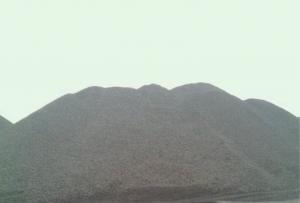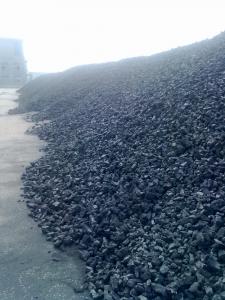The Metallurgical Coke of Size is 30 -- 80 mm
- Loading Port:
- China main port
- Payment Terms:
- TT OR LC
- Min Order Qty:
- 100 m.t.
- Supply Capability:
- 3000 m.t./month
OKorder Service Pledge
OKorder Financial Service
You Might Also Like
1. Structure of Metallurgical Coke of Size is 30--38mm Description:
Coke is made by high temperature metallurgical coke for blast furnace smelting, casting and gasification. Occurring in the process of coking after recovery and purification of coke oven gas is a high calorific value of fuel, is an important industrial raw material in organic synthesis.
Coke is mainly used for blast furnace ironmaking and used for copper, lead, zinc, titanium, antimony, mercury and other non-ferrous metal smelting of blast furnace, reducing agent, compound and the function of stock column frame.
Blast furnace with Coke instead of charcoal, which laid a foundation for the large-scale of modern blast furnace, is a major milestone in the history of metallurgy.
2. Main Features of Metallurgical Coke of Size is 30--38mm:
• Quality assurance
• Mutual benefit
• Preferential price
3. Metallurgical Coke of Size is 30--38mm Images:
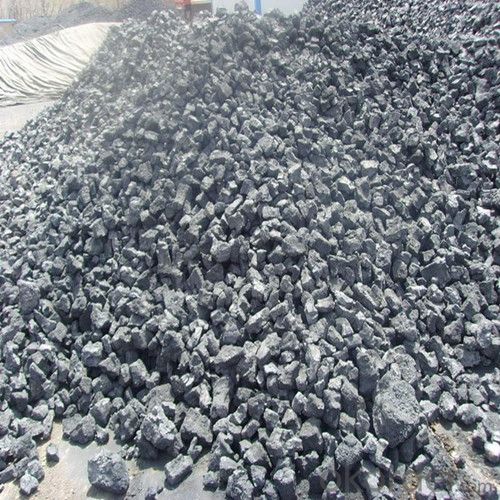

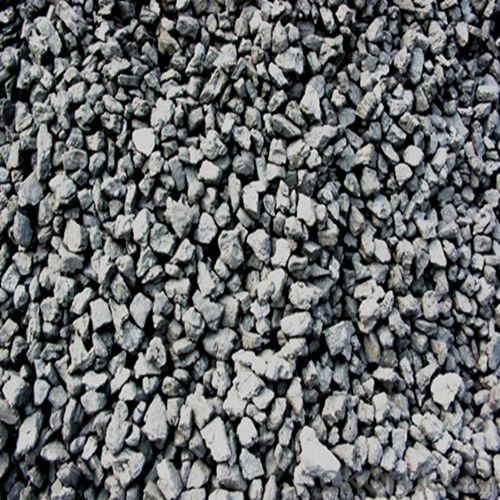
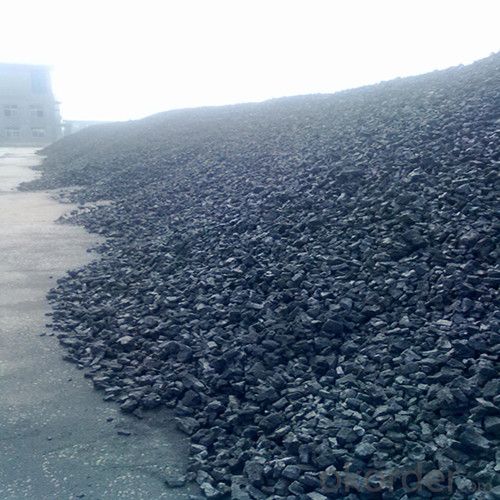
4. Metallurgical Coke of Size is 30--38mm Specification:
Parameters | Guarantee |
Moisture (ARB) | 5% max |
Ash (DB) | 12.50% max |
Volatile Matter (DB) | 1.4% max |
Sulphur (DB) | 0.7% max |
Phosphorus (DB) | 0.035% max |
CSR | 60% min |
CRI | 28% max |
M40 | 82% min |
M10 | 8% max |
Size 30-90 mm | 90% min |
+90 mm | 5% max |
-30mm | 5% max |
Mean Size | 52 mm |
5. FAQ
We have organized several common questions for our clients,may help you sincerely:
1) How to guarantee the quality of the products?
We have established the international advanced quality management system,every link from raw material to final product we have strict quality test;We resolutely put an end to unqualified products flowing into the market. At the same time, we will provide necessary follow-up service assurance.
2) What are coke's main physical properties?
The average heat capacity is 0.808 kj/(KGK) (100 ℃), 1.465 kj/(KGK) (1000 ℃)
Thermal conductivity is 2.64 kj/(MHK) (room temperature), 6.91 kj/(MHK) (900 ℃);
Ignition temperature (air) is 450-650 ℃.
3) How about your company?
Our company began to export coke when China cancelled 40% of coke export tariffs and quotas on January 1, 2013. We export many kinds of coke, such as CSR60 % and CSR 62% metallurgical coke (met coke), the NUT coke of 20 to 50 mm, coke breeze of 3 to 6 mm, and so on.
- Q: Standard grade two grade coke standard
- Quality index of cokeCoke is a solid product of high temperature carbonization, the main component is carbon, is a crack and irregular pore structure (or porous). The number of cracks has a direct impact on the strength and crushing strength of the coke, the index is generally measured in terms of crack degree (the number of cracks in the unit volume coke). The index of pore structure is mainly expressed by the porosity rate (the percentage of the total volume of coke), which affects the reactivity and strength of coke. Different uses of different coke porosity index requirements, the general requirements of metallurgical coke porosity in the 40 ~ 45%, 35 ~ 40% in coke, coke export demand in about 30%. Coke crack degree and the porosity level, and the coking coal has a direct relationship, such as coal based coke refining, crack, high porosity, low strength; with coal as the foundation of the coal refining coke crack less, low porosity and high strength. The strength of coke is usually represented by two indices of crushing strength and abrasion resistance. Coke crushing strength refers to coke can resist foreign impact force without ability along cracks or defects at the broken, represented by the M40 value; wear strength of coke coke refers to the ability to resist external friction without surface of glass forming debris or powder, said M10. The cracking degree of coke affects the M40 value of its breaking strength, and the pore structure of coke affects the M10 value. There are many methods for determination of M40 and M10 value method, commonly used in our country the German migon drum test.
- Q: Coke belongs to the coal industry
- 11 other mining industry 28 chemical fiber manufacturing 58 warehousing industryC manufacturing 29 rubber products 59 postal industry13 agricultural and sideline products processing industry 30 plastic products G information transmission, computer services and software industry31 grain grinding of non metallic products 60 telecommunications and other information transmission services 13101320 feed 311 cement, lime and gypsum manufacturing 601 Telecommunications133 vegetable oil 312 cement and gypsum products manufacturing 6020 Internet information1340 sugar 313 brick, stone and other building materials 603 broadcast television transmission135 slaughter and meat 314 glass and glass products 604 satellite transmission136 aquatic products 315 ceramic products 61 computer services
- Q: Coke is how to participate in the steel, and the pellets, sintering, a piece of the furnace in the furnace or in other containers
- Molten iron is produced in a reducing atmosphere of the blast furnace, which is then supplied to the steelmaking plant for steelmaking.
- Q: Types of coke and use of coke
- China's coking industry has been formed with conventional machine coke oven blast furnace ironmaking production of metallurgical coke, with heat recovery coke oven production machinery foundry and foundry
- Q: What are the main uses of coke
- Main use of coke:1, is the most important coking products, more than 90% countries most coke used in blast furnace, blast furnace with coke instead of charcoal, laid the foundation for the large-scale modern blast, is an important milepost in the history of metallurgy.
- Q: Coke indicators are divided into grades
- The index of pore structure is mainly expressed by the porosity rate (the percentage of the total volume of coke), which affects the reactivity and strength of coke. Different uses of different coke porosity index requirements, the general requirements of metallurgical coke porosity in the 40 ~ 45%, 35 ~ 40% in coke, coke export demand in about 30%. Coke crack degree and the porosity level, and the coking coal has a direct relationship, such as coal based coke refining, crack, high porosity, low strength; with coal as the foundation of the coal refining coke crack less, low porosity and high strength
- Q: What is the difference between coke and carbon residue? Coke is a high-temperature refining, carbon residue can be used for civilian fuel it?
- Types of coke:Coke is usually divided by use of metallurgical coke (including blast furnace coke, coke and iron alloy coke, calcium carbide and coke gasification etc.) with coke. The pressurized pulverized coal forming coal, coke carbonization etc. in the new postprocessing process called Formcoke.1, metallurgical coke, metallurgical coke is coke, coke, iron alloy coke and non-ferrous metal smelting coke for metallurgical coke collectively. More than 90% are used in blast furnace, the furnace coke often called metallurgical coke.The metallurgical coke quality standard (GB/T1996-94) made in China is the quality standard of blast furnace
- Q: Do not understand why some of the indicators of coke is the cause of the full analysis of phosphorus or foundry use of this time?It is best to use the foundry requirements? Thank you
- Foundry coke is used in cupola melting iron will fuel. Because the blast furnace cupola and metallurgical industry is different, only melting effect, without reduction reaction, the furnace is not so dephosphorization, the phosphorus in coke, some will come back to this in the metallurgical molten iron, called "Rephosphorized", this is decided by the principle of thermodynamics and kinetics. To make the original low phosphorus iron phosphorus increased harmful phosphorus. Therefore, the general foundry to buy Coke require low phosphorus coke. Some foundry with part of lime and dolomite in dephosphorization of iron in cupola, in the process, can relax the requirements for coke. However, this is suitable for large-scale, continuous production of iron.
- Q: What is the difference between coke and semi coke in ferrosilicon smelting process? In the process of energy statistics in the end should be 0.9714 of the conversion coefficient should be used with the conversion coefficient of 0.75 x 0.9714, please expert advice? emergencyUrgent!
- Coke is used for smelting iron alloy coke, and the coke is used in blast furnace and used for copper, lead, zinc, titanium, antimony, mercury and other non-ferrous metal smelting of blast furnace, reducing agent, heating agent and columnar skeleton.
- Q: What's the difference between coke and coke?
- When the dry distillation is carried out in the chamber type dry distillation furnace, the primary thermal decomposition product is contacted with the red hot coke and the high temperature furnace wall, and the two thermal decomposition occurs, and the thermal decomposition product (coke oven gas and other coking chemical products) is formed in the two timeThe solid product of low temperature distillation is a black semi coke with loose structure, low gas yield and high tar yield;The high temperature distillation solid product is the structure compact silver gray coke, the coal gas production rate is high and the tar production rate is low
Send your message to us
The Metallurgical Coke of Size is 30 -- 80 mm
- Loading Port:
- China main port
- Payment Terms:
- TT OR LC
- Min Order Qty:
- 100 m.t.
- Supply Capability:
- 3000 m.t./month
OKorder Service Pledge
OKorder Financial Service
Similar products
Hot products
Hot Searches
